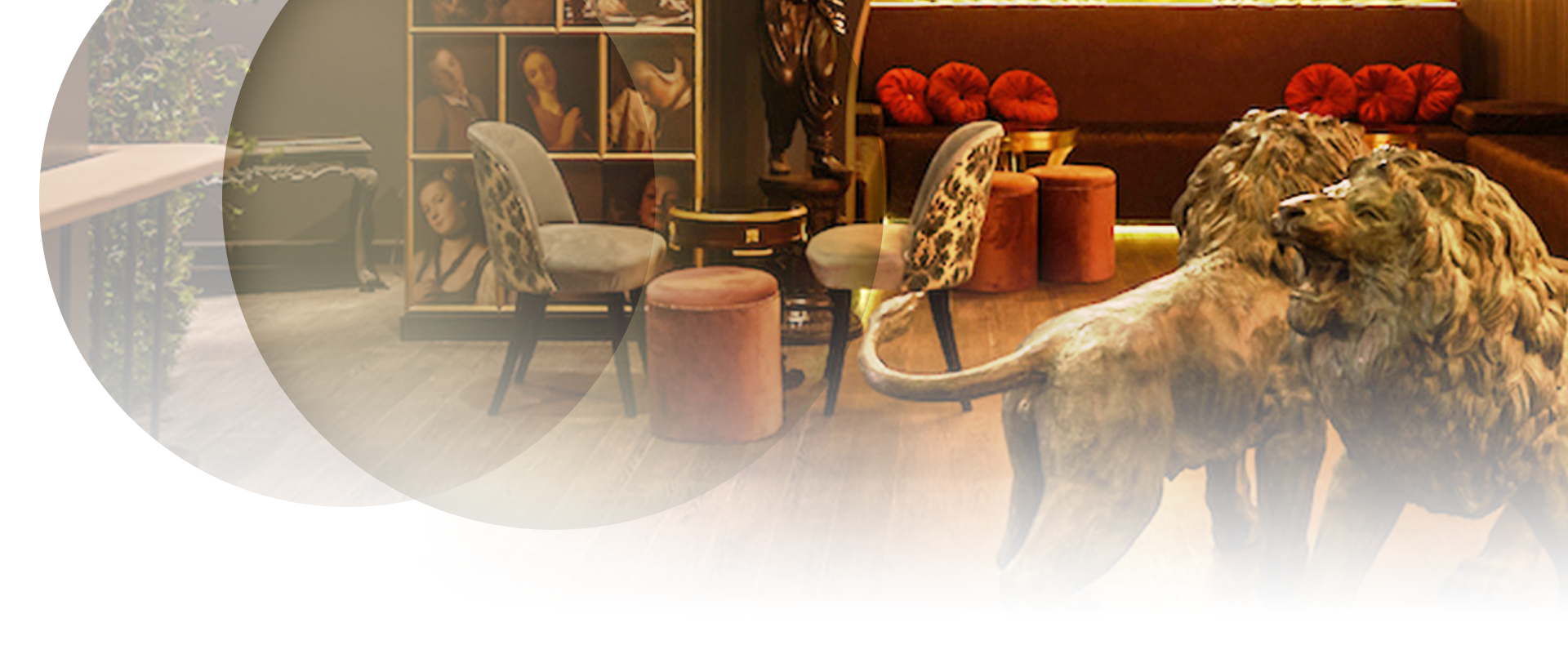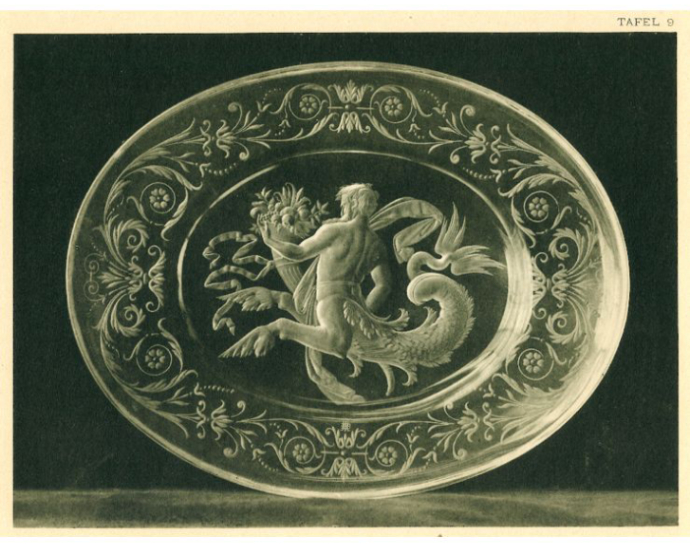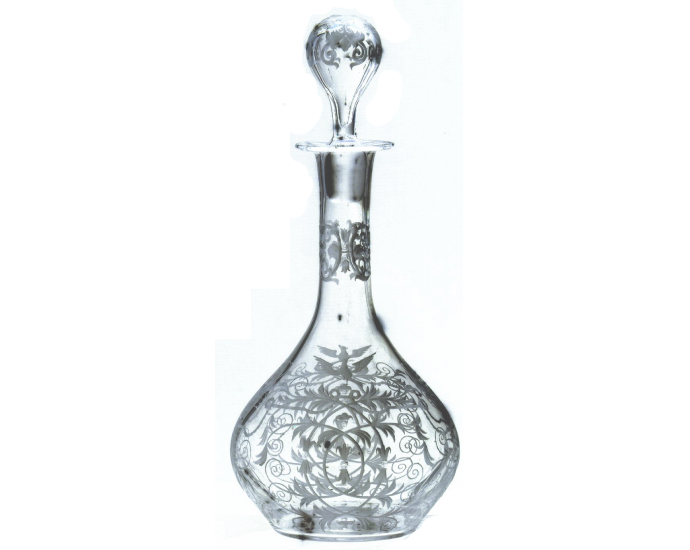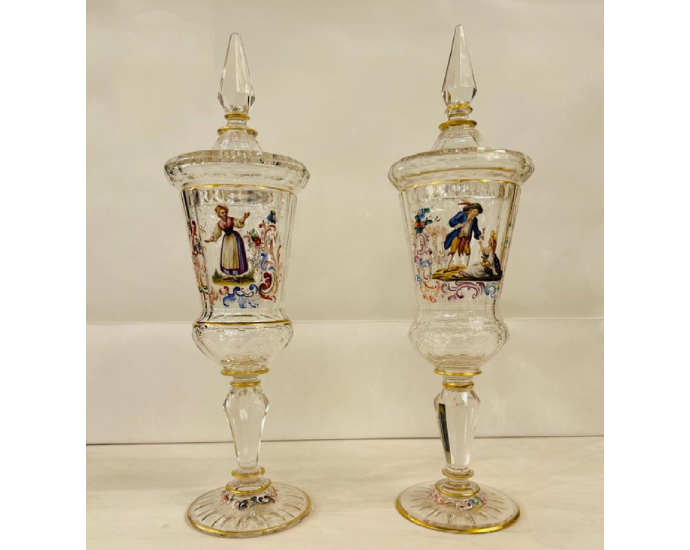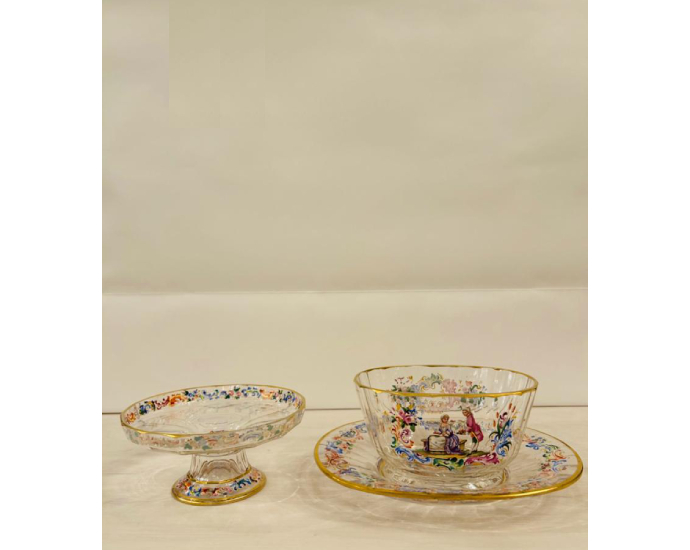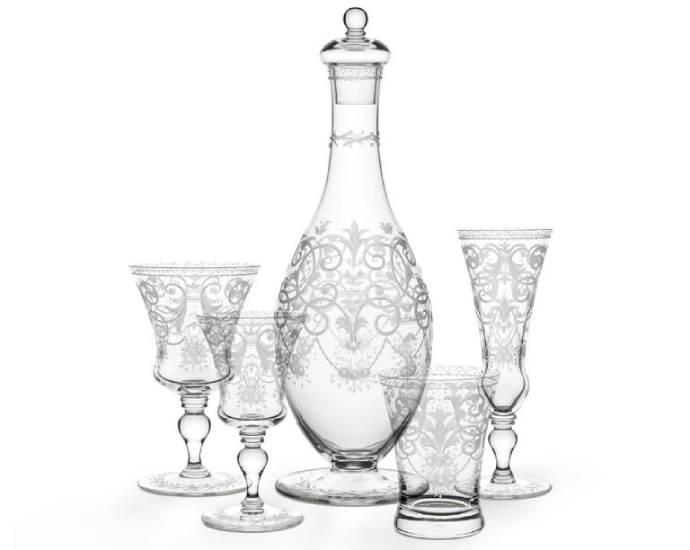
Drinking set no.231 – “Barock” with engraved ornament
Design: Stefan Rath, 1905
Inspired by an original Viennese Baroque glass from the mid-18th century, Stefan Rath designed two variations of these enchanting hand engraved glasses in 1905. Since 1935 Austrian embassies all over the world have been equipped with the set.

Drinking set no.98 – “Palais”
Design: Ludwig Lobmeyr, 1870
The shape of this service reflects the era in which it was created, an age concerned with the revival of historic styles. The series from the year 1870 was designed by Ludwig Lobmeyr. As the “grandseigneur” of the art of glassmaking he furnished many elegant homes with it.
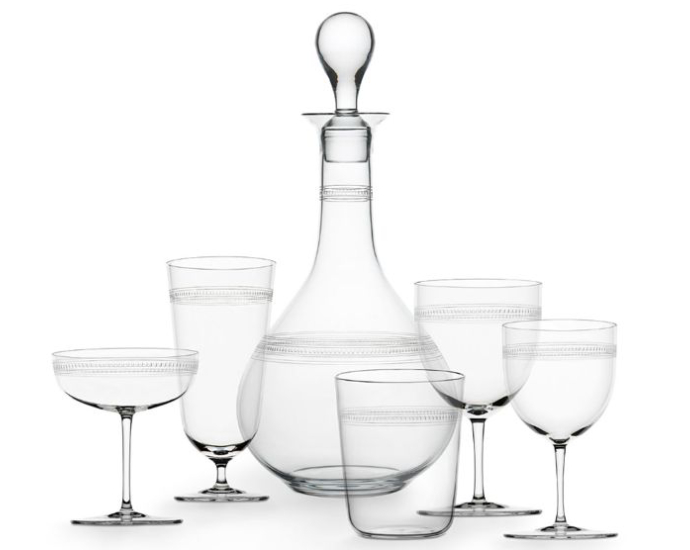
Drinking set no.4
Design: Ludwig Lobmeyr., 1856
With its timeless appeal, the muslin glass set of 1856 is our most successful. It belongs to a body of about one hundred sets designed by Ludwig Lobmeyer himself. The clear shape and fine appearance make it a true classic.
In its simplicity and functionality, the series is designated as the origin of the modern wine glass in museum collections and publications.

Pitcher no.7887 from the arabian series
Design: Machytka & Schmoranz, 1877
As early as 1848/49, Ludwig Lobmeyr delivered chandeliers to the palace of the Khedive in Cairo. Starting in the 1870s, a significant collection of valuable glass objects was created, mainly in collaboration with architects and Orient experts Franz and Gustav Schmoranz. Delightful, abstract patterns in colorful enamel painting and gold were applied to the hand-blown, cut vases and plates. In commemoration of an exhibition at the „Museum of Islamic Civilisation“ in Sharjah/UAE 2015, a pitcher from the “Arabian Series” has been put back into production.
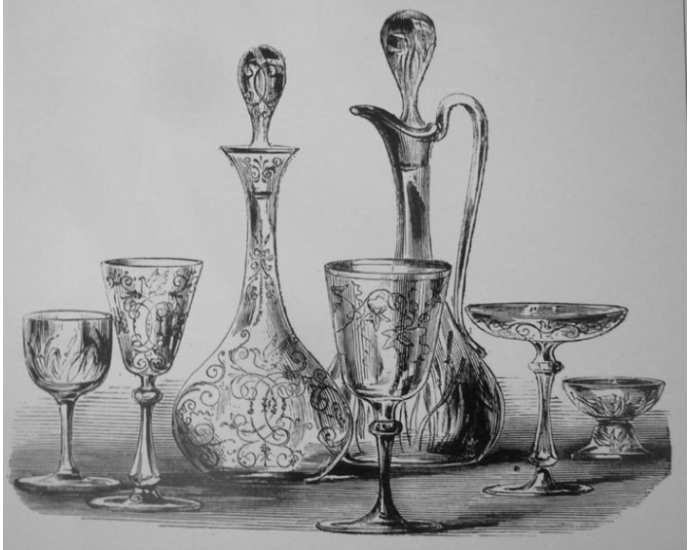
Drinking Set No. 54 “with Renaissance engraving”
Design: Ludwig Lobmeyr, ca. 1860
Lobmeyr Drinking Set No. 54 is one of the early typical Lobmeyr designs; it was shown at the second world exhibition in London, 1862. The Set is also called “Miramare”, as it was commissioned by the Austrian archduke Ferdinand Maximilian – the later emperor Maximilian of Mexico- for his castle of the same name near Trieste on the Adriatic coast. This original glassware together with the matching porcelain set are still to be seen in Vienna´s Imperial Household Museum, the “Wiener Hofsilber- und –tafelkammer”.
Other members of the Imperial family commissioned this design too – additionally engraved with the Austrian crest and the Habsburg crown.
In the 1860ies, the period of Historicism it was fashionable to reinterpret styles from the past. In this case the engraving refers to the ornamental style of the Renaissance, which was wide spread during the historicist period in Vienna, creating a much more airy effect compared to contemporaneous movements in other parts of Europe.
The glasses are mouth blown and handmade, hand cut and hand polished and engraved in the most precious technique of copper wheel engraving.


